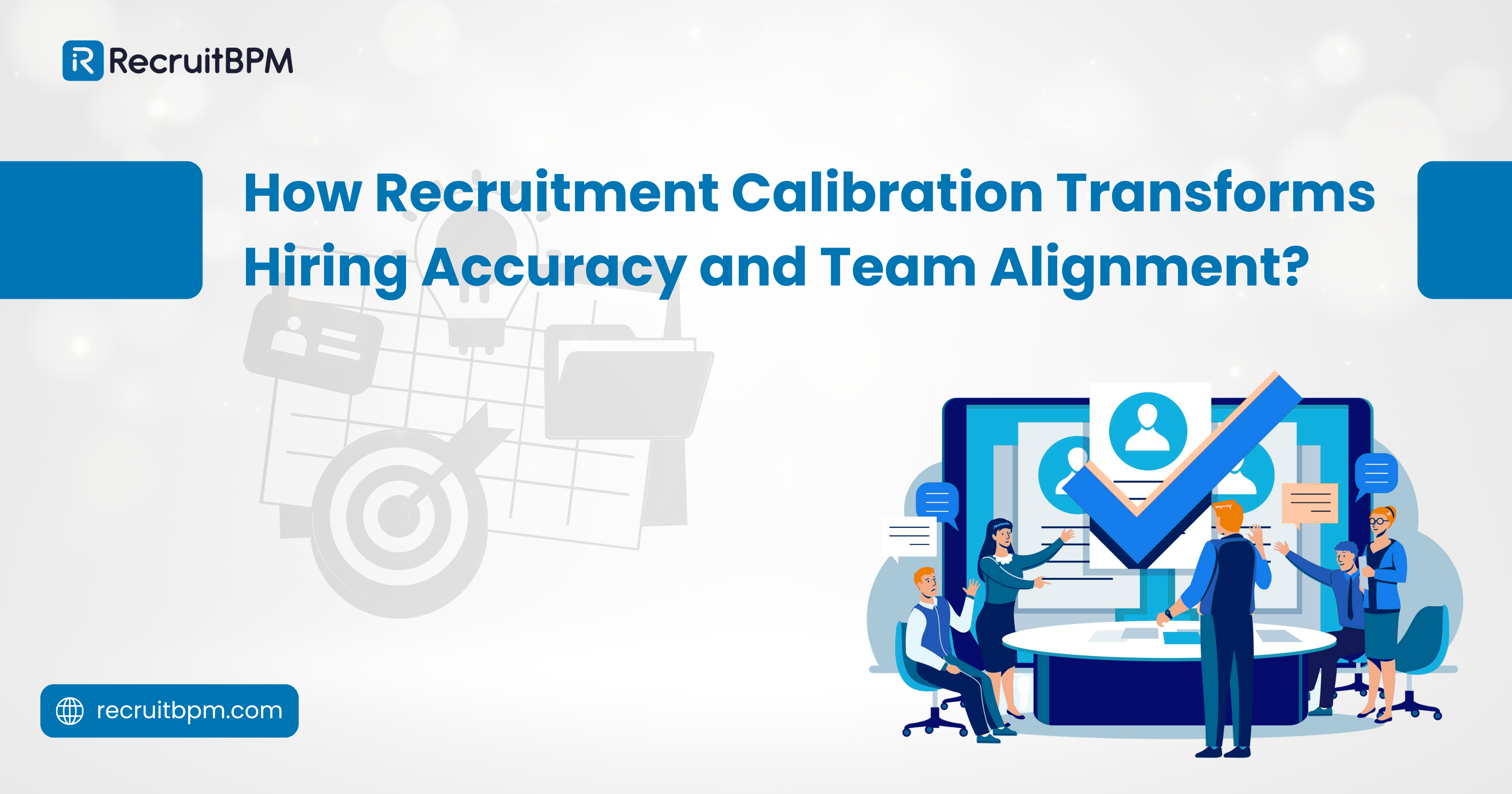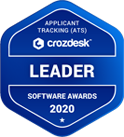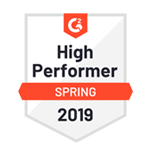Hiring decisions made by multiple evaluators often produce frustrating inconsistencies. One interviewer rates a candidate as exceptional while another considers the same person mediocre. Without alignment on evaluation criteria, recruitment becomes a subjective lottery rather than a systematic assessment.
Calibration addresses this fundamental challenge by ensuring all evaluators apply consistent standards when assessing candidates. For recruitment agencies managing complex searches involving multiple interviewers, clients, and stakeholders, calibration transforms chaotic evaluation processes into reliable, defensible hiring decisions. Mastering calibration distinguishes professional agencies that deliver predictable quality from those that produce unpredictable outcomes despite significant effort.
What is Calibration?
Calibration in recruitment refers to a process used by hiring teams to ensure that all evaluators are aligned in their assessment criteria, interpretation of candidate qualifications, and overall evaluation standards. The goal is to maintain consistency, fairness, and objectivity in the recruitment process, leading to better hiring decisions and minimizing biases.
How does the Calibration Process Work?
Calibration involves structured sessions where hiring team members review candidate profiles together, discuss evaluation criteria explicitly, align on scoring standards and benchmarks, resolve interpretation differences about requirements, and document agreed-upon assessment approaches. These collaborative exercises ensure everyone evaluates candidates using the same mental models and standards rather than applying individual subjective preferences.
Common Calibration Activities
The calibration process typically includes reviewing sample resumes together to align on what constitutes strong, average, or weak qualifications based on job requirements, participating in calibration sessions to agree on how to score candidate responses to common interview questions, and analyzing case studies or work samples to establish consistent evaluation standards for problem-solving abilities and technical skills.
Where Calibration Applies in the Hiring Process?
Calibration applies throughout recruitment processes—from initial resume screening through final interviews. Calibration helps determine whether a potential hire is as amazing as she seems in her resume or LinkedIn profile. The key is paying close attention to identify possible red flags and inconsistencies that might not be apparent without systematic evaluation alignment.
When implemented effectively, calibration ensures fairness and objectivity, improves hiring decisions through aligned criteria, enhances candidate experience via consistent treatment, supports legal compliance by reducing discrimination risk, and fosters team cohesion through unified approaches.
Why Calibration Matters for Recruitment Agencies?
The recruitment industry operates on reputation and results. Calibration directly impacts both by improving placement quality while reducing client frustration with inconsistent candidate recommendations.
Placement quality improves through evaluation consistency
When recruitment agency team members evaluate candidates differently, some strong candidates get dismissed while weak candidates advance. Calibration ensures all recruiters apply the same standards, meaning the best candidates surface reliably regardless of which team member conducts initial screening. This consistency improves placement success rates dramatically.
Client satisfaction increases with predictable candidate quality
Clients become frustrated when recruitment agencies submit candidates varying wildly in quality. One submission exceeds expectations while the next barely meets basics despite supposedly matching identical criteria. Calibration creates reliable quality bands where clients know what to expect from “highly recommended” versus “meets minimum requirements” designations.
Time-to-hire decreases through efficient evaluation
Clear calibration reduces redundant discussions about candidate suitability. When team members are aligned on evaluation criteria, they make faster decisions with greater confidence. Debates about whether candidates meet requirements diminish because everyone applies consistent interpretation of job specifications.
Bias reduction protects agency reputation
Unconscious bias affects everyone—favoring candidates with similar backgrounds, discounting non-traditional career paths, or over-weighting prestigious credentials. Calibration exposes these biases during collaborative evaluation sessions, creating accountability that individual review processes lack. Agencies known for fair, objective assessment attract diverse candidate pools and reputation-conscious clients.
Training efficiency increases for new recruiters
Without calibration, new team members learn evaluation standards through trial and error, gradually absorbing unwritten criteria from feedback on candidate submissions. Structured calibration accelerates this learning by explicitly teaching evaluation standards upfront. New recruiters reach proficiency faster, reducing costly early-career mistakes.
Legal risk decreases through documented standards
Employment discrimination claims sometimes target recruitment agencies alongside clients. Calibrated evaluation processes with documented standards provide legal protection demonstrating systematic, objective assessment rather than arbitrary judgment. This documentation proves invaluable if hiring decisions face regulatory scrutiny.
Calibration sessions build common language and shared mental models across recruitment teams. These collaborative experiences improve overall team cohesion and communication beyond just candidate evaluation contexts. Stronger teams produce better outcomes across all recruitment activities.
Competitive differentiation emerges through systematic quality
Most recruitment agencies rely on individual recruiter judgment without calibration. Agencies implementing systematic calibration deliver more consistent results than competitors. This reliability becomes competitive advantage attracting clients valuing predictable quality over variable outcomes.
How to Use Calibration Effectively?
Implementing calibration successfully requires structured approaches, consistent execution, and organizational commitment that transforms ad hoc evaluation into systematic practice.
Establish clear evaluation criteria before sourcing begins
Define specific, measurable criteria for each position covering required skills, experience levels, educational qualifications, cultural fit indicators, and any other factors determining candidate suitability. Document these criteria explicitly so all team members reference identical standards. Vague criteria like “good communication skills” should become specific like “ability to explain technical concepts to non-technical audiences demonstrated through client-facing experience.”
Create standardized evaluation forms and scoring rubrics
Develop structured templates that guide assessment and capture evaluations consistently. Forms should include all defined criteria with clear scoring scales (1-5 ratings with behavioral anchors describing what each score means). Standardized forms ensure evaluators consider all criteria rather than focusing on personally important factors while neglecting others.
Conduct initial calibration sessions at search launch
Before screening any candidates, gather the recruitment team for calibration meetings reviewing job requirements, discussing evaluation criteria interpretations, and establishing scoring benchmarks. These upfront sessions align everyone before evaluation begins, preventing drift that occurs when team members work independently without coordination.
Use real candidate profiles for calibration exercises
Abstract discussions about evaluation criteria remain theoretical. Review actual anonymized candidate profiles together, having each team member independently score the candidate, then comparing ratings. Discuss rating differences to understand how individuals interpret criteria differently, then align on consistent application. These concrete exercises build shared understanding more effectively than theoretical discussions.
Review borderline candidates collaboratively
When individual evaluators encounter candidates near decision boundaries—those who are almost qualifying or barely missing—bring these profiles to team calibration discussions. Group evaluation of edge cases builds consensus about where lines should be drawn and ensures consistent treatment of similar situations.
Schedule regular recalibration sessions throughout searches
Calibration isn’t one-time activity. As searches progress, evaluator standards drift as individuals encounter different candidate profiles. Regular recalibration sessions—weekly for active searches, monthly for ongoing relationships—maintain alignment. These check-ins identify emerging interpretation differences before they produce significant inconsistencies.
Document calibration decisions and reasoning
Record agreements reached during calibration sessions including specific criteria interpretations, scoring benchmarks established, and rationales for particular decisions. This documentation serves as a reference for current search and provides templates for future similar roles. Written records also provide legal protection demonstrating systematic processes.
Involve clients in calibration when possible
For retained searches or close client partnerships, invite hiring managers to participate in calibration sessions. This involvement ensures agency evaluation criteria match client priorities while educating clients about realistic candidate availability. Client participation also builds trust through transparency about evaluation processes.
Address disagreements constructively during sessions
Calibration surfaces evaluation differences that can create tension. Establish norms emphasizing learning and alignment over being “right.” Frame disagreements as opportunities for improving collective understanding rather than contests between perspectives. Skilled facilitation helps teams navigate differences productively.
Leverage technology for calibration support
Modern ATS platforms offer calibration features including standardized evaluation forms, rating comparisons across evaluators, and tools identifying scoring inconsistencies. These technological supports make calibration more efficient while providing data about where alignment challenges persist.
Train evaluators on bias recognition and mitigation
Calibration reduces but doesn’t eliminate bias. Provide training on common unconscious biases—affinity bias, halo effect, recency bias, confirmation bias—helping team members recognize these patterns in themselves and others. Awareness combined with calibration creates significantly more objective evaluation.
Measure calibration effectiveness through outcome tracking
Monitor whether calibrated evaluation produces better results by tracking placement success rates, client satisfaction scores, candidate retention, and time-to-hire. Compare these metrics before and after implementing calibration to quantify impact and identify continuing improvement opportunities.
Common Challenges with Calibration
Despite clear benefits, calibration implementation introduces challenges that recruitment agencies must navigate successfully to realize value without creating frustrating process overhead.
Time constraints make calibration feel like a burden
Calibration sessions require dedicated time when team members could be sourcing candidates, conducting interviews, or managing client relationships. This opportunity cost makes calibration feel like process overhead rather than a value-adding activity. Overcoming this perception requires demonstrating how upfront calibration time investment pays dividends through faster downstream decision-making and fewer placement failures.
Differing perspectives and biases resist alignment
Team members bring different experiences, preferences, and unconscious biases affecting candidate evaluation. These ingrained patterns resist change even when calibration explicitly addresses them. Some evaluators struggle accepting that their individual judgment should yield to group consensus. Managing these ego and preference dynamics requires skilled facilitation and psychological safety enabling honest discussion.
Lack of standardized criteria creates vague calibration
Without clear, specific evaluation criteria documented upfront, calibration sessions devolve into abstract discussions producing minimal alignment. Vague criteria like “cultural fit” or “strong communicator” allow wide interpretation, making consistent application impossible. Developing truly specific criteria requires substantial initial investment that busy recruitment teams struggle prioritizing.
Resistance to change undermines adoption
Experienced recruiters accustomed to independent evaluation may view calibration as unnecessary constraint on their judgment. This resistance manifests as minimal participation in calibration sessions, paying lip service to agreed standards while reverting to personal preferences during actual evaluation, or skepticism about calibration value. Overcoming resistance requires demonstrating tangible benefits and building culture valuing consistency.
Inconsistent participation creates alignment gaps
Calibration only works when all evaluators participate. When some team members skip sessions, attend partially, or join recruitment teams mid-search without calibration onboarding, evaluation consistency suffers. Ensuring full participation requires making calibration mandatory and scheduling to maximize attendance.
Complex roles challenge standardized evaluation
Some positions are multifaceted with numerous evaluation dimensions making comprehensive calibration difficult. Senior roles requiring leadership, technical expertise, strategic thinking, cultural fit, and industry relationships simultaneously overwhelm calibration processes focused on individual criteria. Complex role calibration requires breaking positions into components calibrated separately then integrated during final assessment.
Maintaining alignment over time proves difficult
Even after successful initial calibration, alignment erodes as time passes. Team members gradually drift toward personal preferences, new team members join without proper calibration onboarding, and job market changes alter what constitutes “qualified” candidate. Maintaining alignment requires regular recalibration sessions and continuous reinforcement.
Communication barriers hinder alignment
Effective calibration demands clear communication, but misunderstandings, unclear terminology, and different technical vocabulary create barriers. Remote teams face additional communication challenges through video calls lacking in-person interaction richness. Ensuring clear, transparent communication requires deliberate effort and sometimes multiple discussion cycles to achieve genuine alignment.
Documentation requirements create administrative burden
Proper calibration requires documenting evaluation criteria, scoring rubrics, calibration session outcomes, and agreed-upon standards. Creating and maintaining this documentation adds administrative overhead. Without dedicated resources for documentation, it often becomes incomplete or outdated, undermining calibration effectiveness.
Achieving complete objectivity remains impossible
While calibration improves objectivity, human judgment remains inherently subjective. Even standardized criteria get interpreted through individual perspectives and experiences. Expecting calibration to eliminate all subjectivity creates disappointment. Realistic calibration goals acknowledge improvement rather than perfection.
Technology limitations constrain calibration support
Not all ATS platforms offer robust calibration features. Some systems lack standardized evaluation forms, comparative rating displays, or tools flagging scoring inconsistencies. These technological limitations force manual calibration processes through spreadsheets and meetings that feel cumbersome compared to integrated system support.
Balancing rigor with practicality challenges implementation
Theoretically optimal calibration involves extensive sessions, comprehensive documentation, and rigorous alignment processes. Practically, recruitment agencies must balance calibration rigor against time constraints, client urgency, and resource limitations. Finding sustainable middle ground between thoroughness and efficiency requires experimentation and adaptation.

















